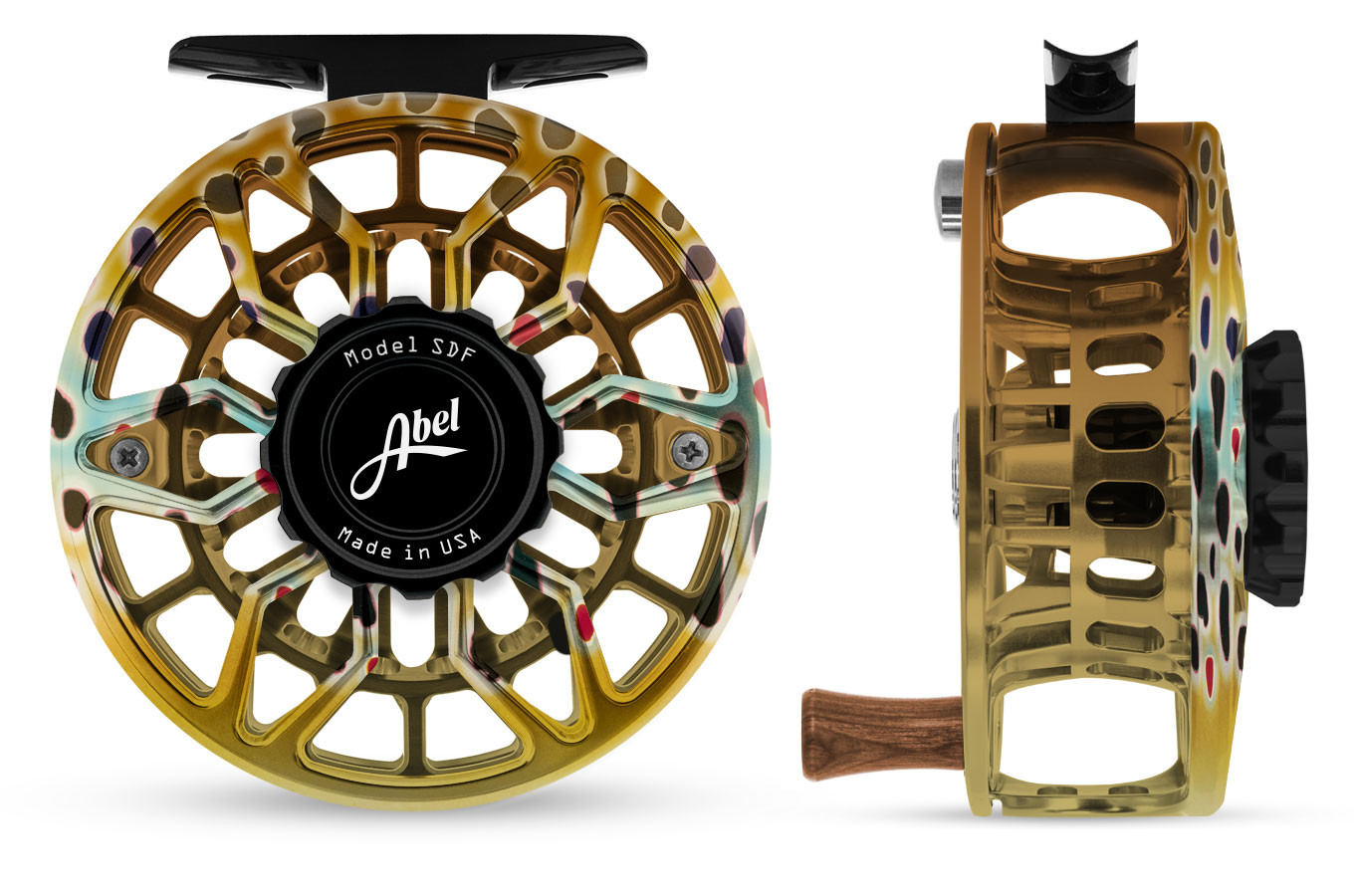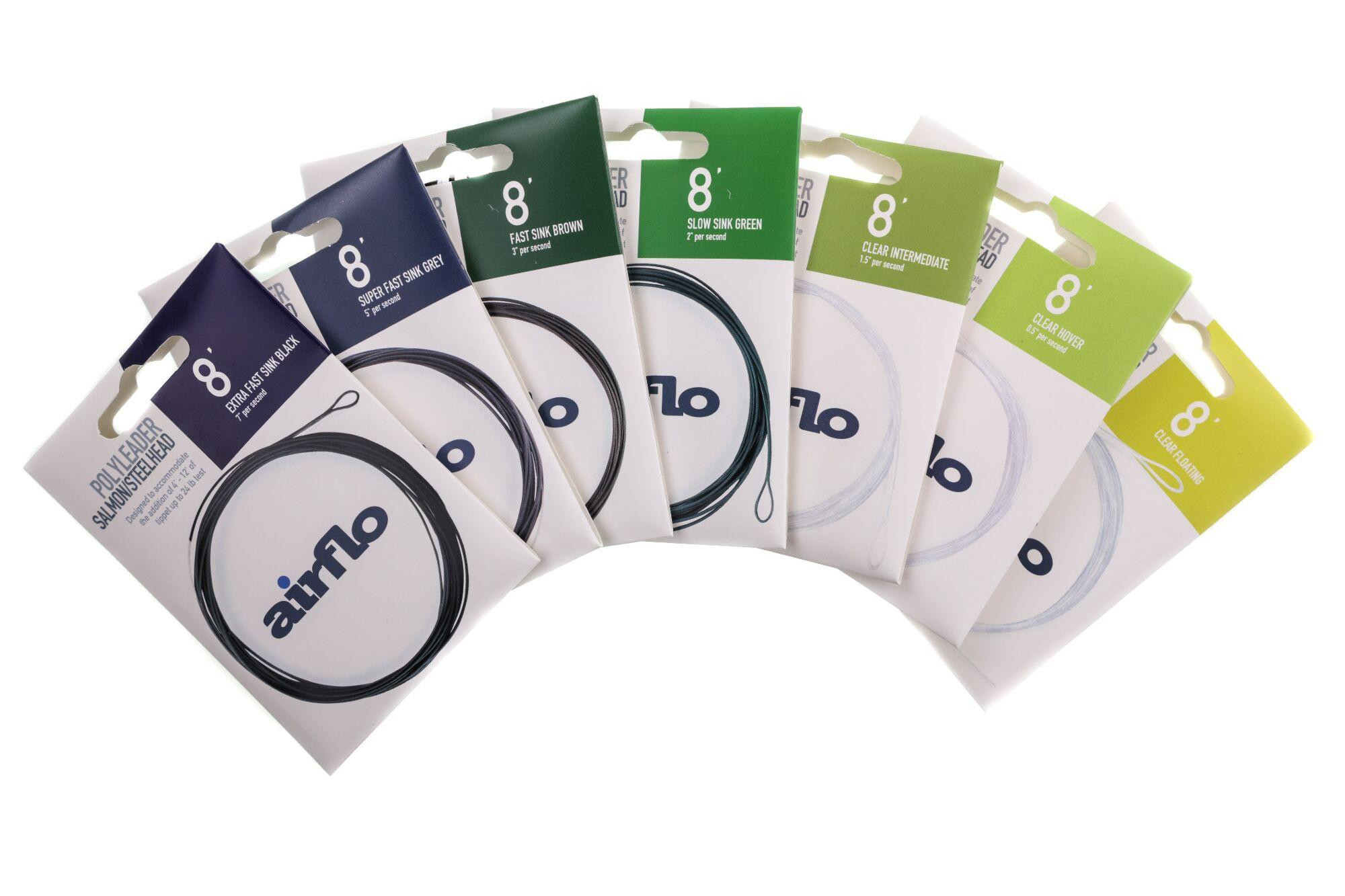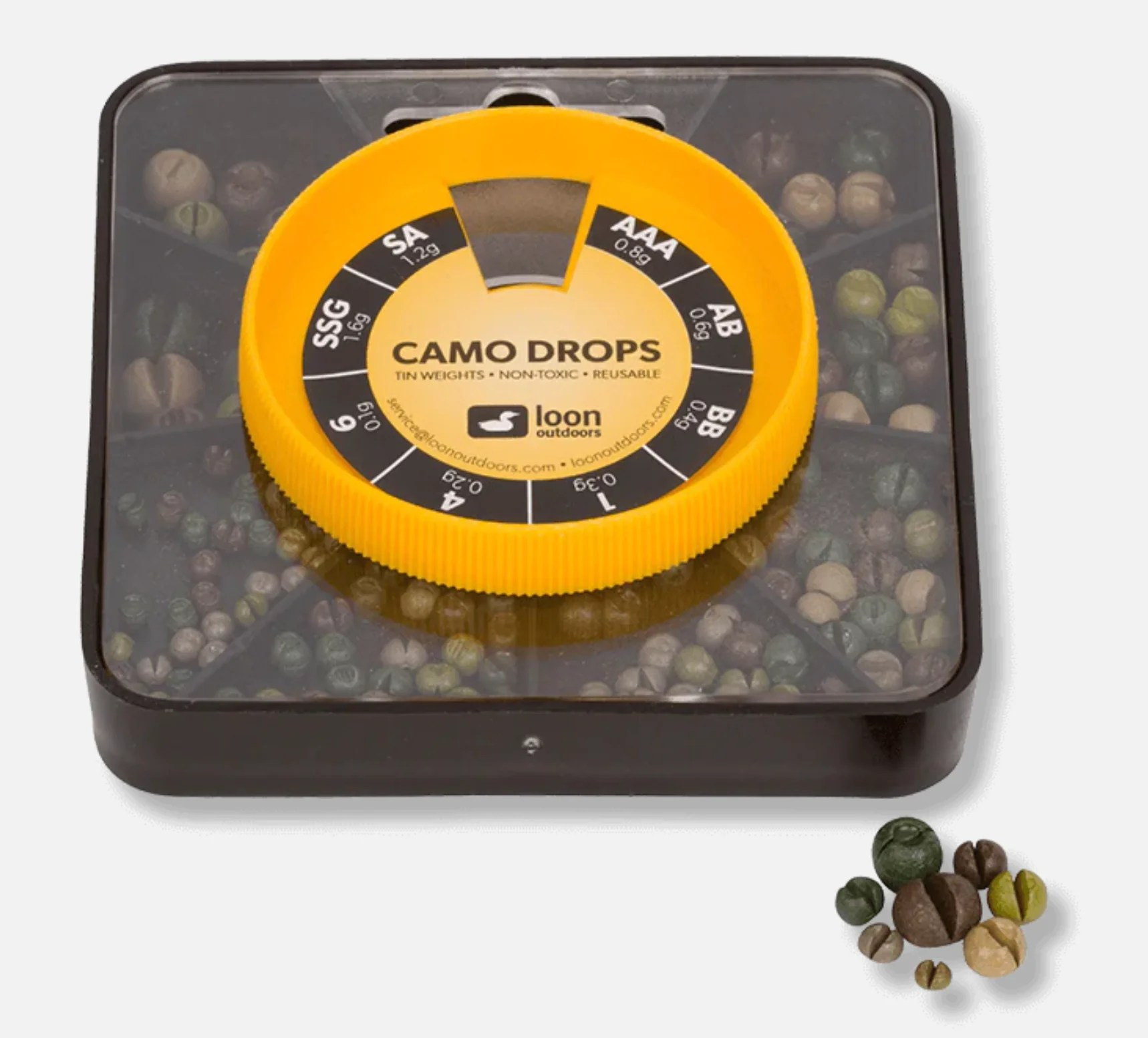Fly fishing with streamers is an exciting way to target larger fish, and What Are Streamers In Fly Fishing? Streamers are artificial flies designed to imitate baitfish or other aquatic creatures, enticing predatory fish to strike, and flyermedia.net can provide you with valuable insights into this technique. By understanding streamer selection, casting methods, and retrieval techniques, you can significantly increase your success on the water. Explore various fly fishing tips, improve your angling success, and catch more fish now.
1. What Exactly is Streamer Fishing?
Streamer fishing is a dynamic fly fishing technique that uses an artificial fly known as a streamer to mimic baitfish or other aquatic prey. Streamers are designed to entice predatory fish, offering a visually appealing and enticing target.
1.1 Becoming the Predator: Mimicking the Food Chain
Streamer fishing involves using a streamer fly to imitate the natural food sources of larger fish. These flies can represent various prey, including sculpins, minnows, leeches, and crayfish, all of which are attractive to predatory fish. The sizes of streamer flies can range from small, simple patterns like Woolly Buggers to larger, more complex articulated flies. Unlike traditional dry-fly or nymph fishing, streamer fishing requires an active retrieve, where the angler strips line to create movement and attract fish. This active approach makes streamer fishing an engaging and effective method for catching fish.
1.2 Active Retrieval: Bringing the Fly to Life
Streamer fishing stands out due to its active retrieval method. Unlike the static presentations of dry flies or nymphs, streamer fishing involves the angler actively imparting movement to the fly. This is typically achieved by stripping the line, which causes the streamer to dart and swim through the water, mimicking the movements of a fleeing baitfish. The angler’s control over the retrieve allows for a dynamic presentation, making it highly effective in attracting predatory fish. This active technique not only entices strikes but also allows anglers to cover more water, increasing their chances of locating active fish.
1.3 Understanding Streamer Types
Streamer flies come in a variety of shapes, sizes, and materials, each designed to imitate different types of prey. Some common streamer patterns include:
- Woolly Bugger: A versatile pattern that imitates a wide range of aquatic life, from nymphs to leeches.
- Clouser Minnow: A classic baitfish imitation that is effective in both fresh and saltwater.
- Articulated Streamers: These flies have multiple sections connected by hinges, creating a lifelike swimming action.
- Deceiver: A saltwater streamer that imitates various baitfish species.
Understanding the different types of streamers and their intended prey helps anglers choose the right fly for the conditions and target species.
2. Why Should You Use a Streamer Fly?
The primary reason to use a streamer fly is simple: larger fish often require substantial protein to sustain themselves, and they’re more likely to strike at a larger, meatier meal when given the opportunity. These aggressive fish are often driven by hunger, territorial instincts, or primal reflexes to attack sizable prey.
2.1 Bigger Fish, Bigger Meals
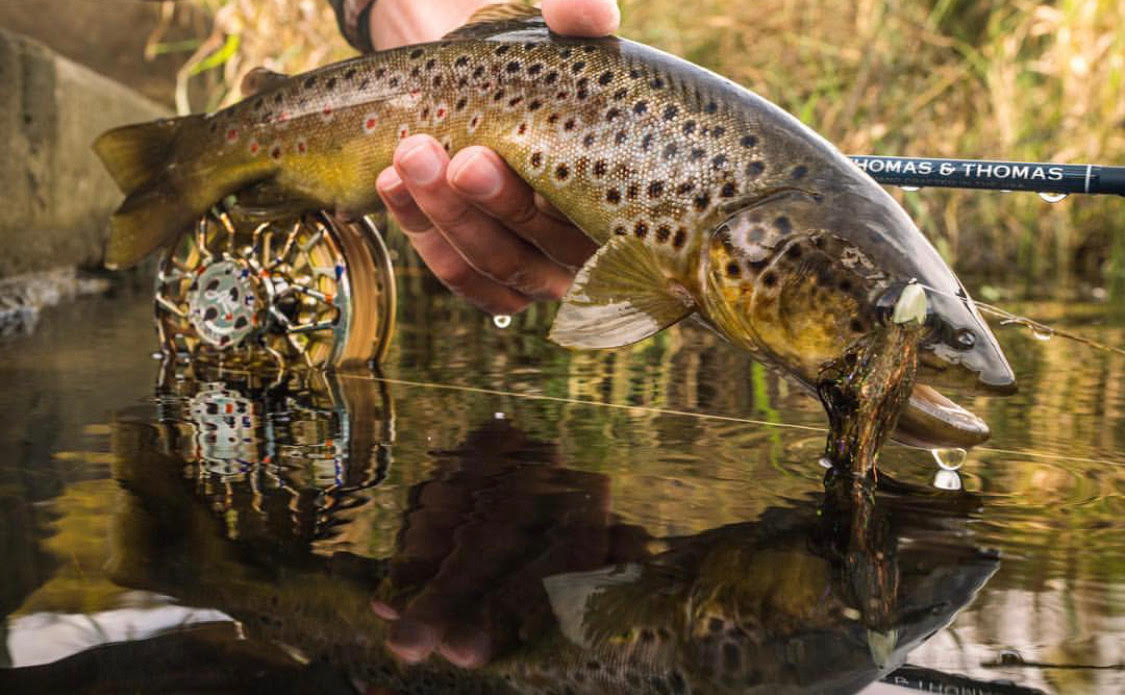 Trout caught on a streamer fly
Trout caught on a streamer fly
Streamer fishing is particularly effective for targeting larger fish because it presents them with a substantial meal. Big fish require more energy, and they often prefer larger prey items that offer a higher caloric return. Streamers imitate these larger food sources, making them irresistible to hungry predators. Whether it’s a trout looking for a protein-rich meal or a bass defending its territory, a well-presented streamer can trigger a powerful strike.
2.2 Covering More Water: Efficiency in Fishing
Streamers allow anglers to efficiently cover large areas of water. By utilizing specific casting and retrieval techniques, you can effectively present your fly to a wide range of potential holding spots. This is especially useful in larger rivers or lakes where fish may be scattered. The ability to cover more water quickly increases the likelihood of encountering active fish and triggering strikes.
2.3 The Thrill of the Strike
Streamer fishing is an exciting method of fly fishing due to its engaging nature and the often-aggressive strikes it produces. The visual and tactile feedback of a fish attacking a streamer is an unforgettable experience for any angler. The anticipation of the strike, combined with the power of the take, makes streamer fishing a thrilling and rewarding technique. Every angler remembers the first time they felt a determined fish attack their streamer.
2.4 Triggering Reactionary Strikes
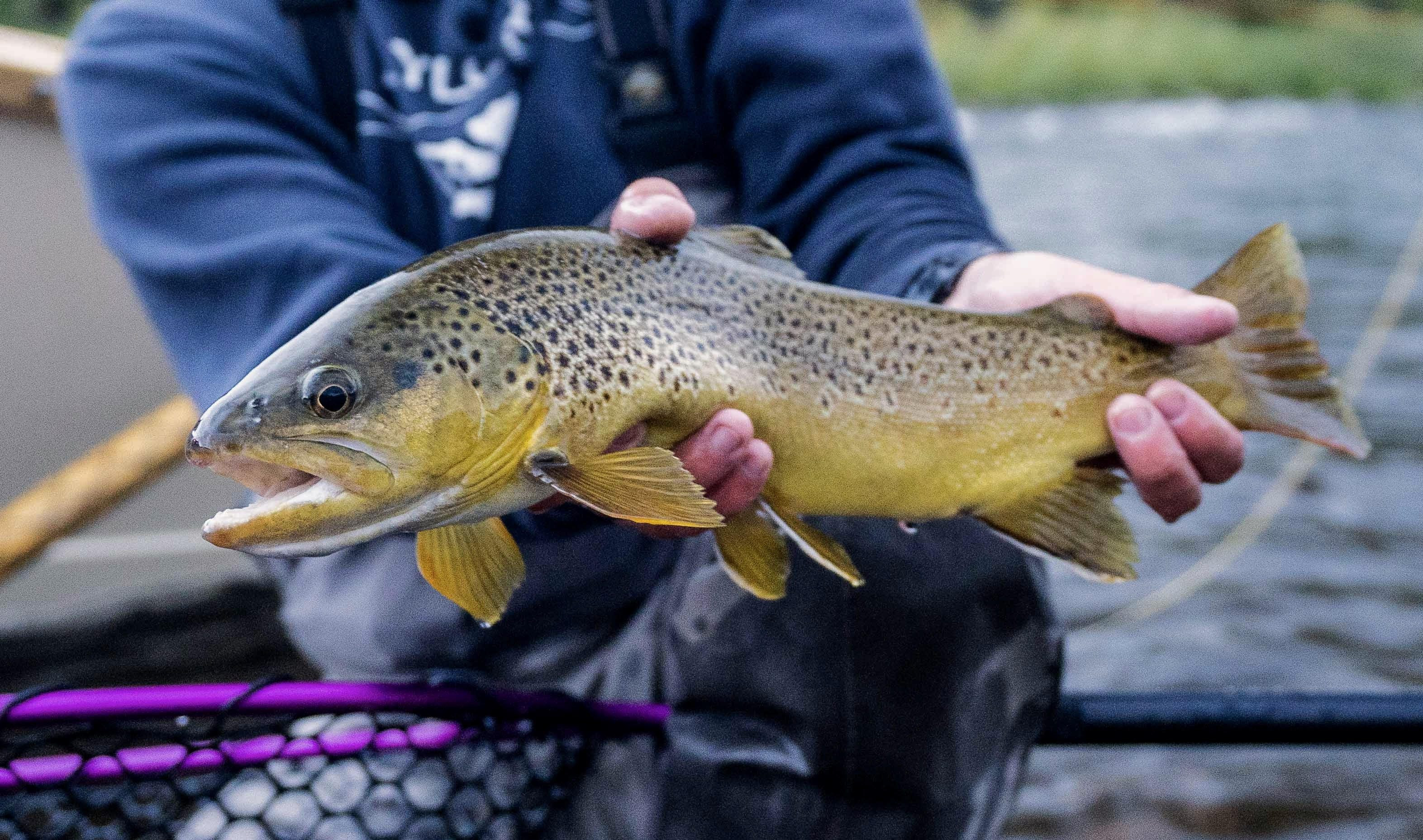 Streamer fish caught on the Roaring Fork River
Streamer fish caught on the Roaring Fork River
One of the most significant advantages of streamer fishing is its ability to trigger reactionary strikes. Unlike nymphing or dry fly fishing, which rely on fish actively feeding, streamer fishing can entice strikes from fish that are not actively feeding but are reacting to the presence of a perceived threat or intruder. When a streamer glides past a fish, it can trigger a primal instinct to strike, even if the fish is not hungry. This makes streamer fishing an effective technique for catching fish that are otherwise inactive.
3. When and Where Should You Use a Streamer?
To determine the optimal time and location for using a streamer, consider the recent weather conditions, the presence of insects, and the depth and clarity of the water.
3.1 When to Streamer Fish: Reading the Conditions
Several factors can influence the effectiveness of streamer fishing. Conditions like recent rainstorms, the absence of visible insects, and murky, deep water are all indicators that streamer fishing may be productive.
- Post-Rain Conditions: After a rainstorm, water levels often rise, and clarity decreases. These conditions can make it difficult for fish to see smaller flies, but streamers, with their larger size and profile, can be more easily detected.
- Lack of Insect Activity: When insect hatches are sparse or nonexistent, fish may be less inclined to feed on surface insects. In these situations, streamers can provide an enticing alternative.
- Water Temperature: Trout, in particular, are most active when water temperatures are between 55-60 degrees Fahrenheit. If the water is too cold or too hot, they may be less likely to rise for surface flies. Streamers can be effective in these conditions by presenting a larger meal directly in front of the fish.
3.2 Where to Streamer Fish: Finding the Hotspots
The most productive areas for streamer fishing are typically locations that offer cover and protection for fish, such as under banks, behind large rocks, around submerged logs, in current seams, and in deep pockets of water.
- Under Banks: Fish often seek refuge under the cover of undercut banks. These areas provide protection from predators and offer ambush points for feeding.
- Behind Large Rocks: Large rocks create eddies and slack water where fish can conserve energy while waiting for food to drift by.
- Around Submerged Logs: Submerged logs and trees provide excellent cover for fish, offering protection from predators and creating complex habitats that attract a variety of prey.
- Current Seams: Current seams are the meeting points between fast and slow-moving water. These areas provide fish with easy access to food while allowing them to conserve energy in the slower current.
- Deep Pockets: Deep pools and pockets offer fish refuge from strong currents and provide a stable environment with cooler temperatures.
3.3 The Importance of Water Clarity
Water clarity plays a significant role in streamer fishing success. In murky or stained water, larger, brighter streamers are more effective because they are easier for fish to see. In clear water, smaller, more subtle streamers may be more productive, as fish can be more selective.
3.4 Understanding Fish Behavior
All fish seek cover, whether it’s from predators, humans, or other creatures. Submerged debris like trees offers excellent hiding spots for fish to avoid predators and ambush prey. Targeting these areas with streamers can yield great results.
3.5 Fishing the Seam
The seam, where two currents meet, creates a pocket where fish conserve energy. These areas serve as underwater drive-through lanes, allowing fish to wait for insects or minnows to drift into their mouths. Prospecting the seam is crucial for any angler.
3.6 Fishing Deep
The golden rule of streamer fishing is to fish in deep water. If you can’t see the bottom of the water, it likely means visibility is low, and larger fish are lurking there. Most streamers incorporate flashy elements to attract fish in murky water. These attractors are more likely to be seen than microscopic nymphs, and the larger fish at the bottom are often waiting for a substantial meal.
 Diagram showing how to locate trout in a stream
Diagram showing how to locate trout in a stream
4. How to Cast and Fish a Streamer Effectively
Casting and fishing with streamers require a blend of technique and creativity.
4.1 Casting Streamers: Adapting to the Weight
Casting streamers requires adapting your technique to accommodate the weight of the fly. While anglers often strive for graceful and precise casts, streamer fishing demands a different approach due to the larger size and weight of the fly.
- Target Selection: Before casting, select a target spot, preferably slightly upstream to allow the fly maximum time in the water.
- Loading Up: Create tension on the fly before casting to generate enough force to propel it.
- Swing or Two: With enough line, the weight of the fly will carry it through the air with ease.
- High Rod Tip: Finish the cast with the rod tip high to allow the fly to travel farther and land gently, minimizing spooking fish.
4.2 Essential Casting Tips for Streamers
Here are some key considerations for casting streamers effectively:
- Pick Your Target: Before making a cast, identify the specific spot where you want your fly to land. Casting slightly upstream is often advantageous, as it allows the fly more time in the water and enables it to sink to the desired depth.
- Load Up the Rod: Generate tension on the fly rod before initiating the forward cast. This can be achieved with a simple backcast or by using a water haul technique. The goal is to load the rod with enough energy to propel the heavier streamer through the air.
- Swing Smoothly: Avoid jerky or abrupt movements during the cast. Instead, focus on a smooth, controlled swing that allows the rod to load and unload efficiently. This will help you achieve greater distance and accuracy.
- Finish High: At the end of the cast, elevate your rod tip to approximately 120 degrees. This allows the fly to travel farther and land more softly on the water, reducing the risk of spooking fish.
4.3 Fishing Techniques: Bringing Your Streamer to Life
Once your streamer is in the water, there are several techniques you can use to entice strikes:
- Get Down: Allow the fly to sink to the desired depth before beginning your retrieve. The deeper you go, the calmer the water becomes, and the more likely you are to find larger fish.
- Mend It: After the fly has been in the water for a few seconds, mend the line by flipping it upstream. This allows the current to pull the fly down the side of the opposite bank naturally, enticing fish lurking under banks or near sidewalls.
- Rod Tip Down: Keep your rod tip low, even placing it slightly in the water, to maintain a natural presentation while stripping line. This also helps the streamer stay deeper in the water.
- Little Strips: Use short, 4-6 inch strips to retrieve the line, adding a slight wiggle to the rod to create sporadic movement.
- Let It Swing: As the fly swings across the pool, most strikes will occur. Maintain tension on the line and watch for it to straighten out, indicating a fish has taken the fly.
- Begin to Jig: After the swing, jig the fly by giving gentle tugs on the rod with intermittent pauses, simulating an injured baitfish.
4.4 Key Streamer Fishing Techniques
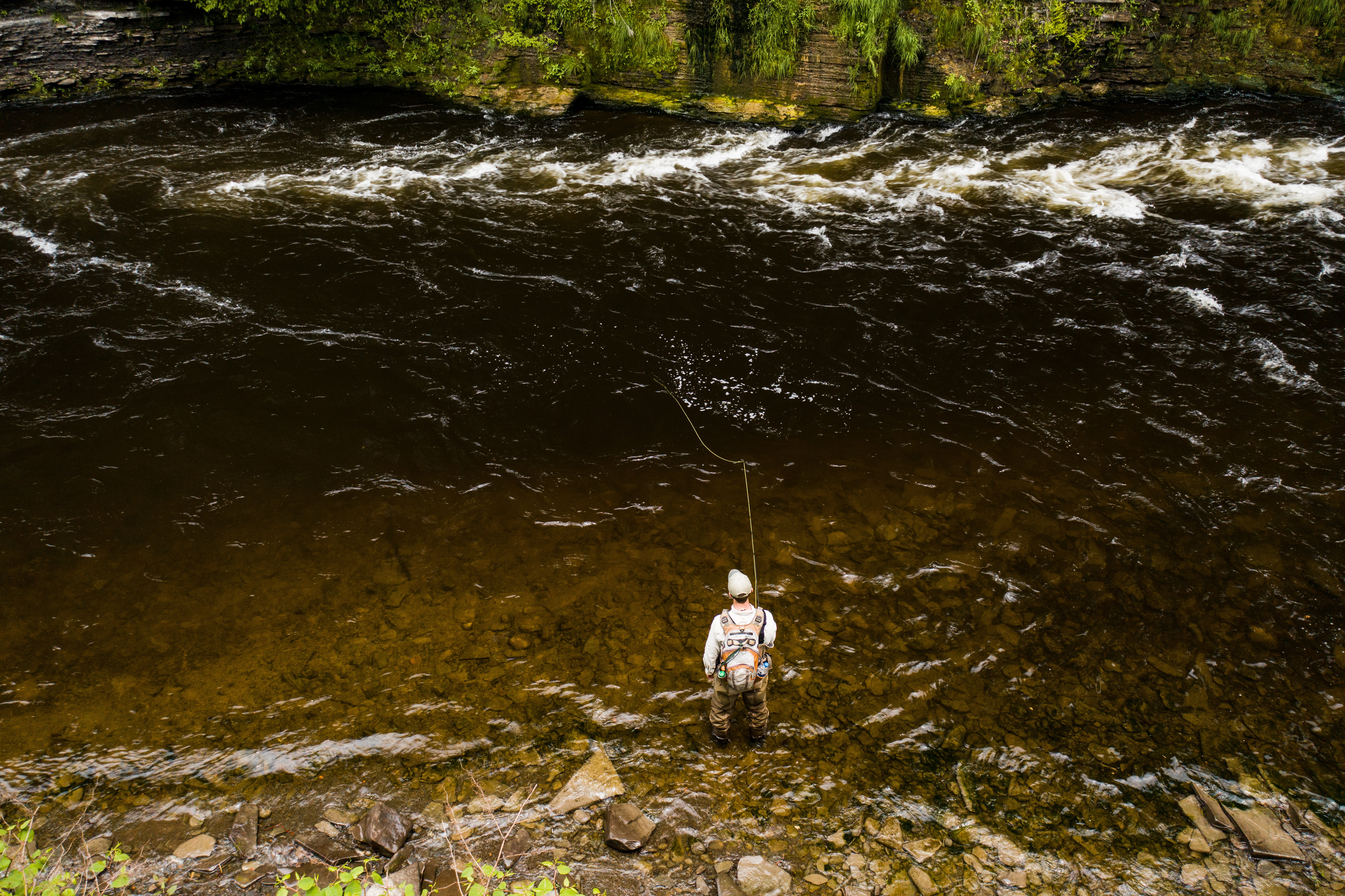 Angler with fish caught on a streamer fly
Angler with fish caught on a streamer fly
Here are some essential techniques to master when fishing streamers:
- Get Down: One of the fundamental principles of streamer fishing is to get the fly down to the level where the fish are holding. In turbulent water, the deeper you go, the calmer it becomes. This is where larger fish often reside, conserving energy in the oxygen-rich, cold water.
- Mend It: After the fly has been in the water for a few seconds, perform a downstream mend on the line. This involves flipping the line upstream to counteract the drag of the current, allowing the fly to sink more naturally and cover more water along the opposite bank.
- Rod Tip Down: Keep your rod tip pointed low, close to the water’s surface, as the fly drifts downstream. This maintains a direct connection with the fly, allowing you to detect subtle strikes and ensuring that the streamer stays deep during the retrieve.
- Little Strips: As the fly approaches the end of its drift, begin stripping in line using short, erratic pulls of 4-6 inches. This creates an enticing movement that imitates a fleeing baitfish. Many anglers also incorporate a slight wiggle of the rod tip to add further sporadic action.
- Let It Swing: At the end of the drift, allow the fly to swing across the pool back towards your shore. This is often when strikes occur, as the fish perceive the streamer as a target attempting to escape.
- Begin to Jig: After the fly has completed its swing and is parallel with your shoreline, continue the retrieve by using larger strips and “jigging” the fly. This involves giving gentle tugs on the rod to mimic a lurching baitfish or leech.
4.5 Adapting to Still Water
While these techniques are tailored for rivers, they also apply to still water like lakes. In still water, cast as far as possible and allow the fly to sink deeply. Retrieve the streamer with intermittent strips, pausing every six strips for three seconds to add life to the fly. Continue working the fly until it’s near your feet, as strikes can occur at any moment.
5. How to Choose the Right Streamer to Use
For those new to fly fishing, streamers can be a great starting point. While dry fly fishing and nymphing rely heavily on identifying specific insect patterns, streamer fishing allows anglers to focus more on the technique than the specific fly.
5.1 Streamer Selection: Matching Conditions
When selecting a streamer, it’s best to have a variety of options. Here are some streamer patterns to look for:
- Color: The color of the streamer is crucial. On darker, cloudier days, use black or purple streamers to create a silhouette. On sunny days, lighter streamers, preferably white, will reflect sunlight and stand out underwater.
5.2 Key Considerations When Selecting Streamers
When choosing the right streamer, keep these factors in mind:
- Water Clarity: The clarity of the water is a primary factor in streamer selection. In clear water, opt for smaller, more natural-looking streamers that closely resemble the local baitfish. In murky or stained water, choose larger, brighter streamers that will be more visible to fish.
- Water Color: The color of the water can also influence streamer selection. In general, darker streamers work well in low-light conditions or murky water, while lighter streamers are more effective in bright sunlight or clear water.
- Prey Imitation: Consider the types of prey that are prevalent in the water you are fishing. If there are a lot of minnows, choose a streamer that imitates a minnow. If there are a lot of crayfish, choose a streamer that imitates a crayfish.
- Size: The size of the streamer should be appropriate for the size of the fish you are targeting and the conditions you are fishing in. In general, larger streamers are more effective for larger fish, while smaller streamers are more effective for smaller fish.
- Action: The action of the streamer refers to how it moves in the water. Some streamers have a lot of movement, while others have very little. Choose a streamer with an action that is appropriate for the conditions you are fishing in and the type of fish you are targeting.
6. What Equipment Do You Need When Fishing Streamers?
To gear up for streamer fishing, it’s essential to prepare for the possibility of hooking into larger fish.
6.1 Rod Selection: Power and Sensitivity
When selecting a fly rod for streamer fishing, consider the size of the flies you will be using and the size of the fish you are targeting. A rod that is too light will not be able to handle the weight of larger streamers, while a rod that is too heavy will lack the sensitivity needed to detect subtle strikes.
Generally, a 5-weight rod is suitable for smaller streamers, while a 7-9 weight rod is better for larger flies and heavier conditions. It’s best to err on the side of caution and choose a rod that can handle the load.
6.1.1 GLoomis NRX+ Swim Fly
The G. Loomis NRX+ Swim Fly Rod is designed to handle larger flies and powerful fish.
6.2 Reel Selection: Drag and Arbor Size
The reel should complement the rod in weight and balance. Look for a large arbor reel to accommodate the fight from bigger fish. When the line is running out, the extra strength of a large arbor reel will be beneficial.
6.2.1 Abel SDF Fly Reel 5,6,7
The Abel SDF Fly Reel is designed for strength and durability, perfect for large fish.
6.3 Leader Selection: Strength and Sink Rate
A crucial element for streamer fishing, especially for trout and other large fish, is the leader. The suggested leader size typically ranges from 6-9 feet of 3 or 4x, but for large streamers, using 1-2x isn’t overkill. A sinking leader can also be an extremely useful tool for getting your streamer deep quickly.
6.3.1 Airflo Polyleader (Fast Sinking/Fluorocarbon)
Airflo Polyleaders provide excellent sinking capabilities.
6.4 Split Shot: Getting Deep Quickly
When a sinking leader isn’t available, split shot can be added to the line to help the fly sink faster. Attach one or two size 7 split shots about 3-5 inches above the fly.
6.4.1 Loon Camo Drops Non-Toxic Split Shot
Loon Camo Drops are a non-toxic option for adding weight to your line.
6.5 Indicator: An Unorthodox Technique
Using an indicator with a streamer is a newer technique that can be effective in still or slow-moving water, particularly with smaller flies like leach patterns. By working the streamer with slow, intermittent strips, you can simulate an injured baitfish. A cork or plastic indicator is generally recommended.
6.5.1 Airlock Centerlock Strike Indicator
Airlock Strike Indicators are ideal for detecting subtle strikes.
6.6 Additional Equipment Considerations
In addition to the core equipment mentioned above, consider these additional items for streamer fishing:
- Fly Line: Choose a fly line that is specifically designed for streamer fishing. These lines typically have a more aggressive taper that helps turn over larger flies.
- Waders and Boots: Waders and boots are essential for accessing prime streamer fishing locations. Choose a pair that is comfortable and provides good traction.
- Polarized Sunglasses: Polarized sunglasses reduce glare and help you see fish and structure in the water.
- Fly Box: A fly box is essential for organizing and protecting your streamer collection.
- Net: A net is helpful for landing larger fish.
 Angler catching fish on a streamer fly
Angler catching fish on a streamer fly
7. Streamer Fishing FAQs
7.1 What is the best time of year to fish with streamers?
The best time to fish with streamers varies depending on the location and target species. Generally, streamer fishing is most effective during periods of high water or when fish are actively feeding on baitfish. Spring and fall are often productive times for streamer fishing.
7.2 Can I use streamers in still water?
Yes, streamers can be very effective in still water, such as lakes and ponds. When fishing streamers in still water, use a sinking line or a weighted streamer to get the fly down to the desired depth. Retrieve the streamer with a series of strips and pauses, varying the speed and length of the strips to find what works best.
7.3 What size streamer should I use?
The size of the streamer should be appropriate for the size of the fish you are targeting and the size of the baitfish in the water. In general, larger streamers are more effective for larger fish, while smaller streamers are more effective for smaller fish.
7.4 What colors of streamers are most effective?
The most effective colors of streamers vary depending on the water clarity and lighting conditions. In clear water, natural-looking colors like olive, brown, and tan are often effective. In murky or stained water, brighter colors like white, chartreuse, and black can be more visible to fish.
7.5 How do I know if a fish has taken my streamer?
When a fish takes your streamer, you will typically feel a sharp tug on the line. Set the hook immediately by raising the rod tip sharply.
7.6 What is the best way to retrieve a streamer?
There are many different ways to retrieve a streamer, and the best method will vary depending on the conditions and the behavior of the fish. Some common retrieve methods include:
- Strip Retrieve: A steady retrieve with a series of short, even strips.
- Pause Retrieve: A retrieve with a series of strips and pauses.
- Jerk Retrieve: A retrieve with a series of sharp, jerky movements.
- Swim Retrieve: A smooth, steady retrieve that imitates the swimming motion of a baitfish.

